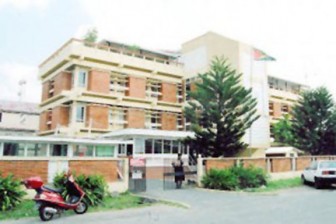The mismatch between pension benefits and contributions and weak reserve management threaten the sustainability of the National Insurance Scheme (NIS), a recently released Inter-national Monetary Fund (IMF) report says.
The report, prepared by IMF staff representatives for the 2010 consultation with Guyana, said that the finances of NIS are unsustainable under current parameters. “Projections show that after 2011 the NIS will shift from small surpluses to growing deficits,” based on a number of trends and developments. This includes a projection of the “aging of the participating population, as the number of contributors per pensioner would fall from 8 in 2006 to 2 by the year 2056,” the report said. The report noted that the NIS pension system covers only 31½ per cent of the employed population. The views expressed in the report, however, do not necessarily reflect the views of the Executive Board of the IMF.

Another reason for the projection of growing deficits, the report said, is that “a relatively high minimum pension, given the low wage environment (the minimum pension is equivalent to approximately 50 per cent of the minimum wage in the public sector, or 34 per cent of average insurable earnings.” The report also pointed to “large and growing contribution arrears” noting that the figure in 2010 amounted to $300 million. “Delays in the court system have also denied resources to the NIS (there are currently 90 outstanding court cases worth $189 million and approximately 189 writs worth $6.4 million),” the report said. Growing NIS contribution evasion by workers, employers, and the self employed was identified as another reason.
The projected growing deficit is also based on the shortfall of 7.1 per cent in the contribution rate required to fund benefits up to 2056. “The actual contribution rate, 13 per cent, is too low relative to the required contribution rate (20 per cent) that would be required to meet the cost of the benefits package up to 2056; the size and growth of informal sector activities, a relatively low retirement age (60 years),generous growth of annual pension benefits driven by the minimum pension adjustment factor, which is not linked to contributions; High administrative costs (equivalent to about 15 per cent of contribution income, or 0.4 per cent of GDP).”
Further, the report pointed to the impact that the NIS investment in Clico would have had on the scheme. The IMF staff representatives said this was not covered by the actuarial report, but the scheme had invested approximately 18.6 per cent of its total assets, or 1.4 per cent of GDP in the Clico conglomerate, for which it has been given a guarantee by the government. The scheme’s Annual Report for 2009 was tabled in the National Assembly in late April and it was reported that it had invested $5.7 billion in Clico.
Meanwhile, the NIS report acknowledged that the authorities have taken some actions to address the concerns and said that in 2006, an NIS Reform Committee was established to provide guidelines on the way forward. “Although its recommendations have not been implemented, the NIS has introduced some changes, including: (2) gender equality in the payment of benefits; (b) improved monitoring to ensure that beneficiaries meet the qualifying conditions; and 9c) computerization of NIS’ records and processes,” the report said. “To fully restore financial balance to the NIS, other important actions, such as raising the retirement age, otherwise restraining the growth of benefits expenditure and increasing the contribution rates over time would have to be taken,” the report said.
In NIS’s 2009 Annual Report, the auditors, TSB LAL and Co, noted that the actuaries had reported several maters of concern, among which was that annual expenditure was projected to exceed the year’s contribution income beginning in 2014.
Reserves are expected to be exhausted in 2022. “The actuaries made certain recommendations to ensure the future viability of the scheme but so far these have not been fully implemented,” the auditors said.
The Actuarial Review had pointed out that reserves are projected to continue growing through 2014, reaching $33 billion. At this point, total expenditure will exceed total income for the first time. Unless the contributions rate is increased, assets will have to be sold each year to meet expenditure, it had noted. It projected reserves to be exhausted in 2022.
The observations were made by an IMF team which visited Guyana during November 8-18, 2010 and participated in discussions. The team met President Bharrat Jagdeo, Prime Minister Sam Hinds, Finance Minister Dr Ashni Singh, Central Bank Governor Lawrence Williams, representatives of the private sector, labour, donor community and members of the political opposition.





